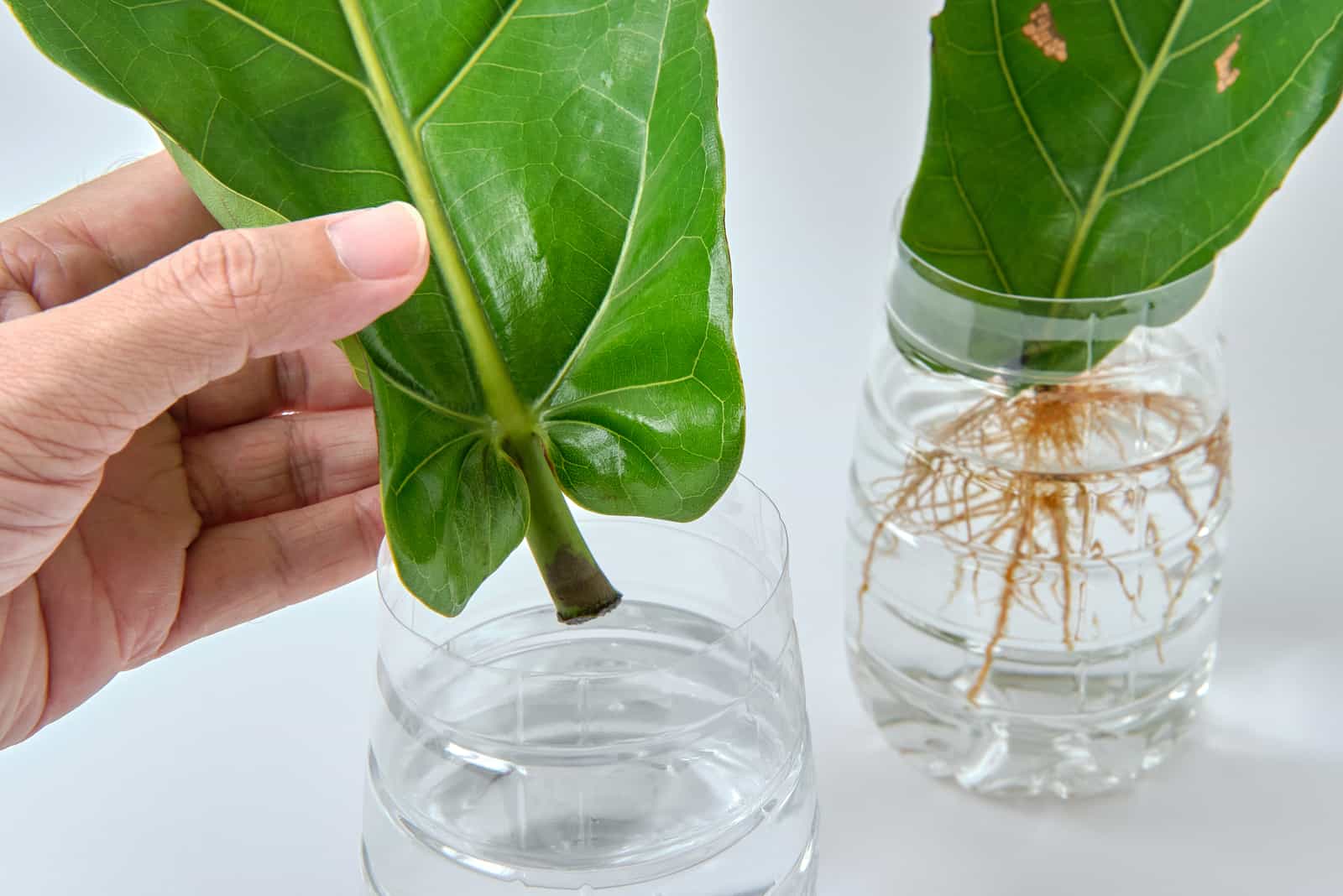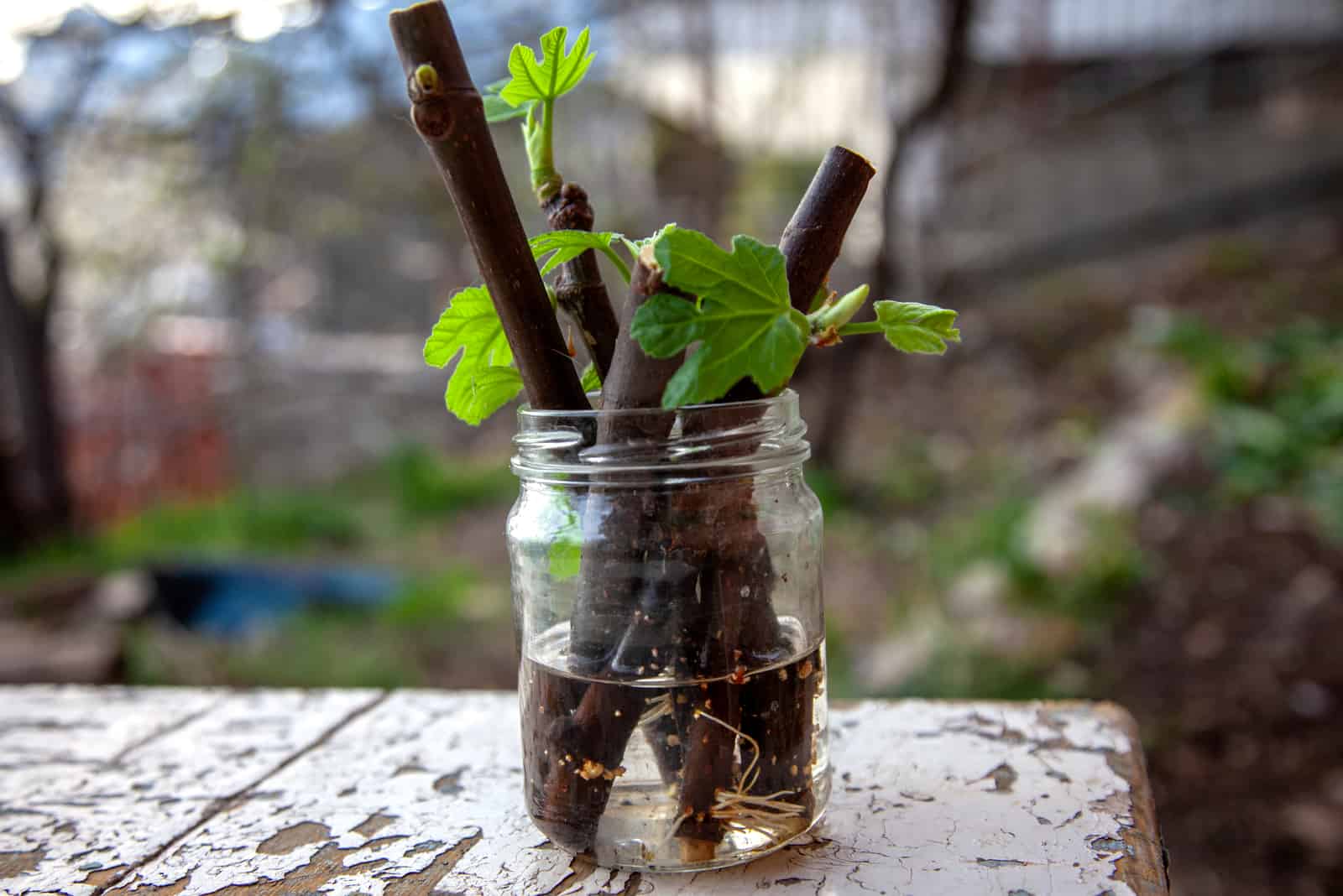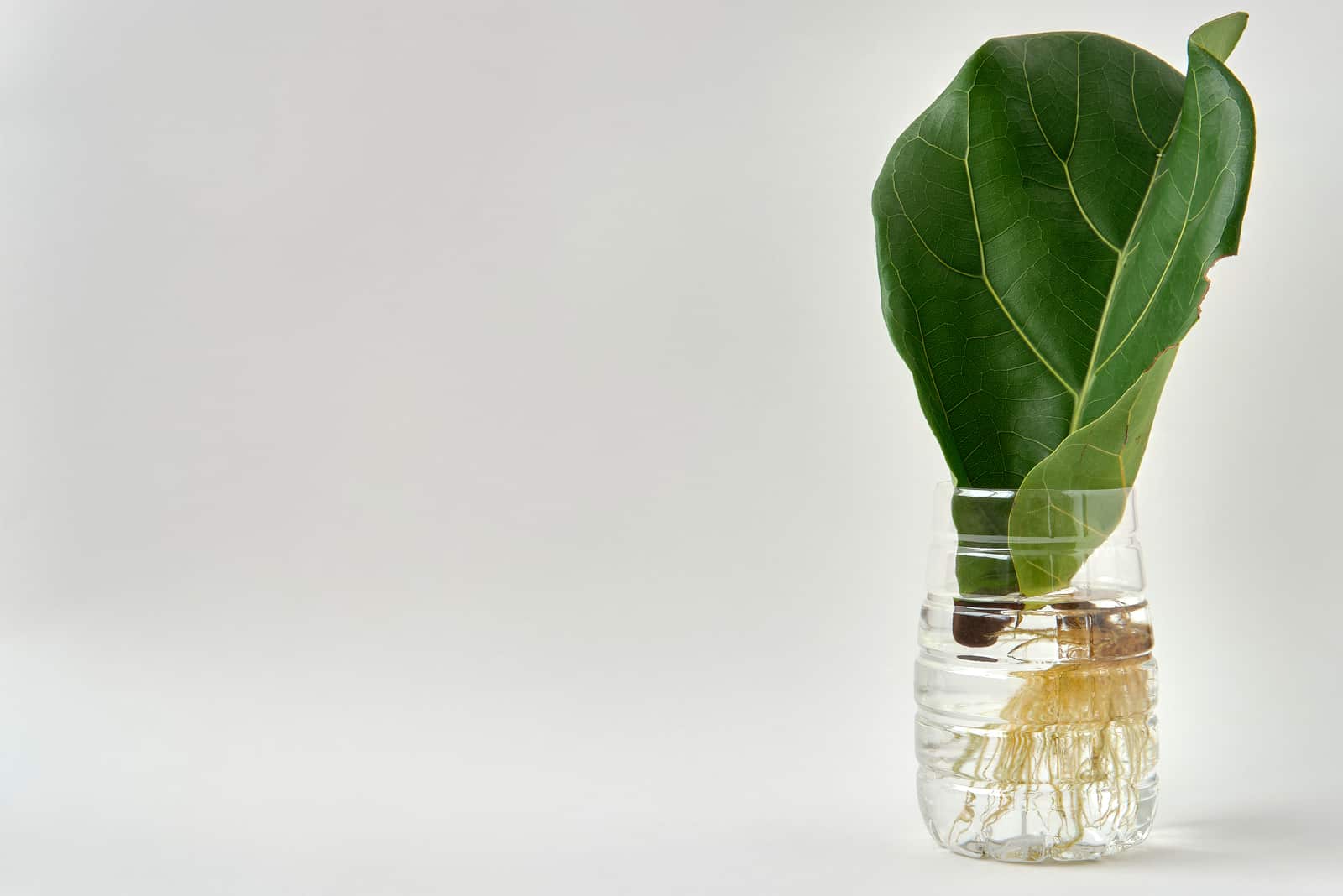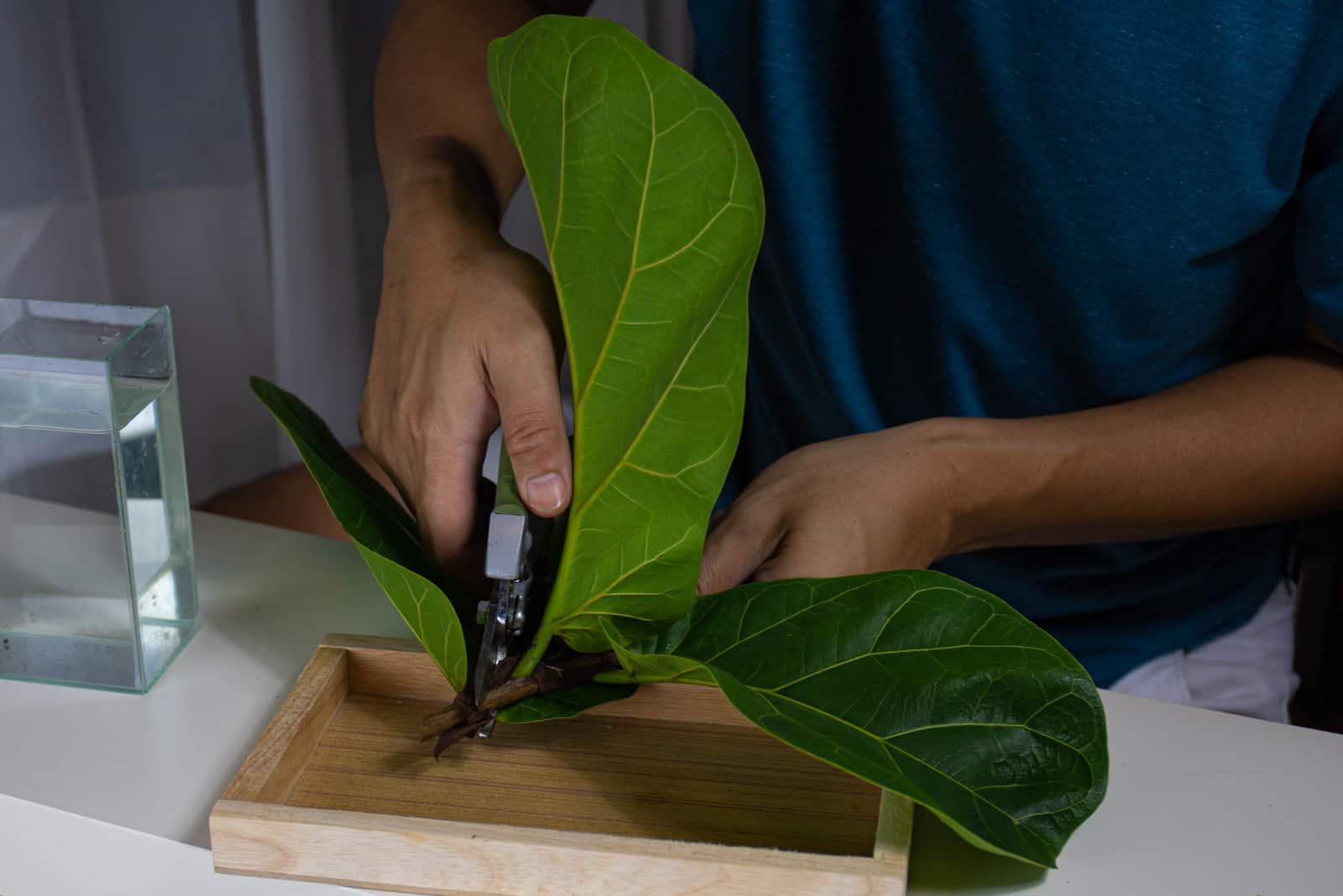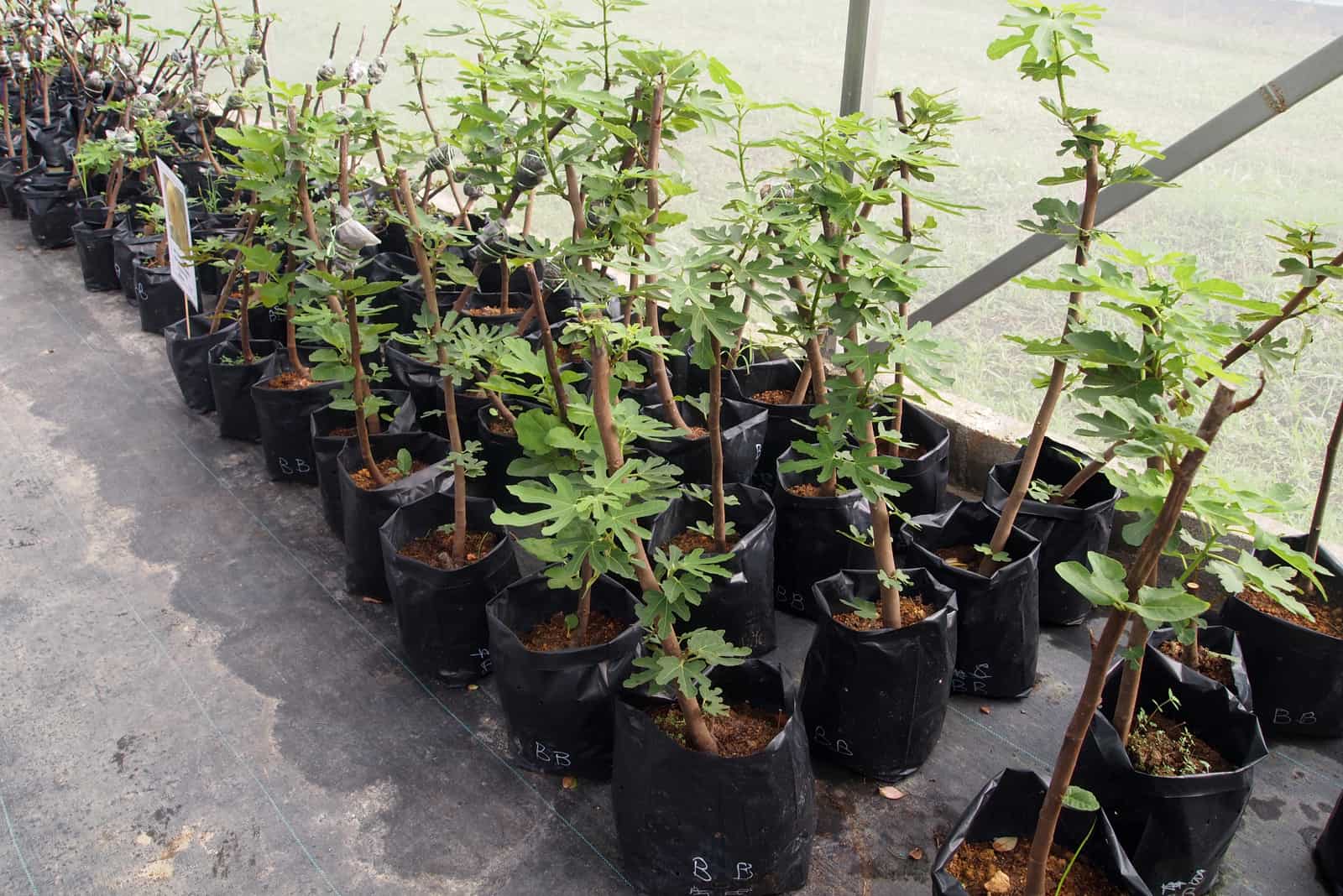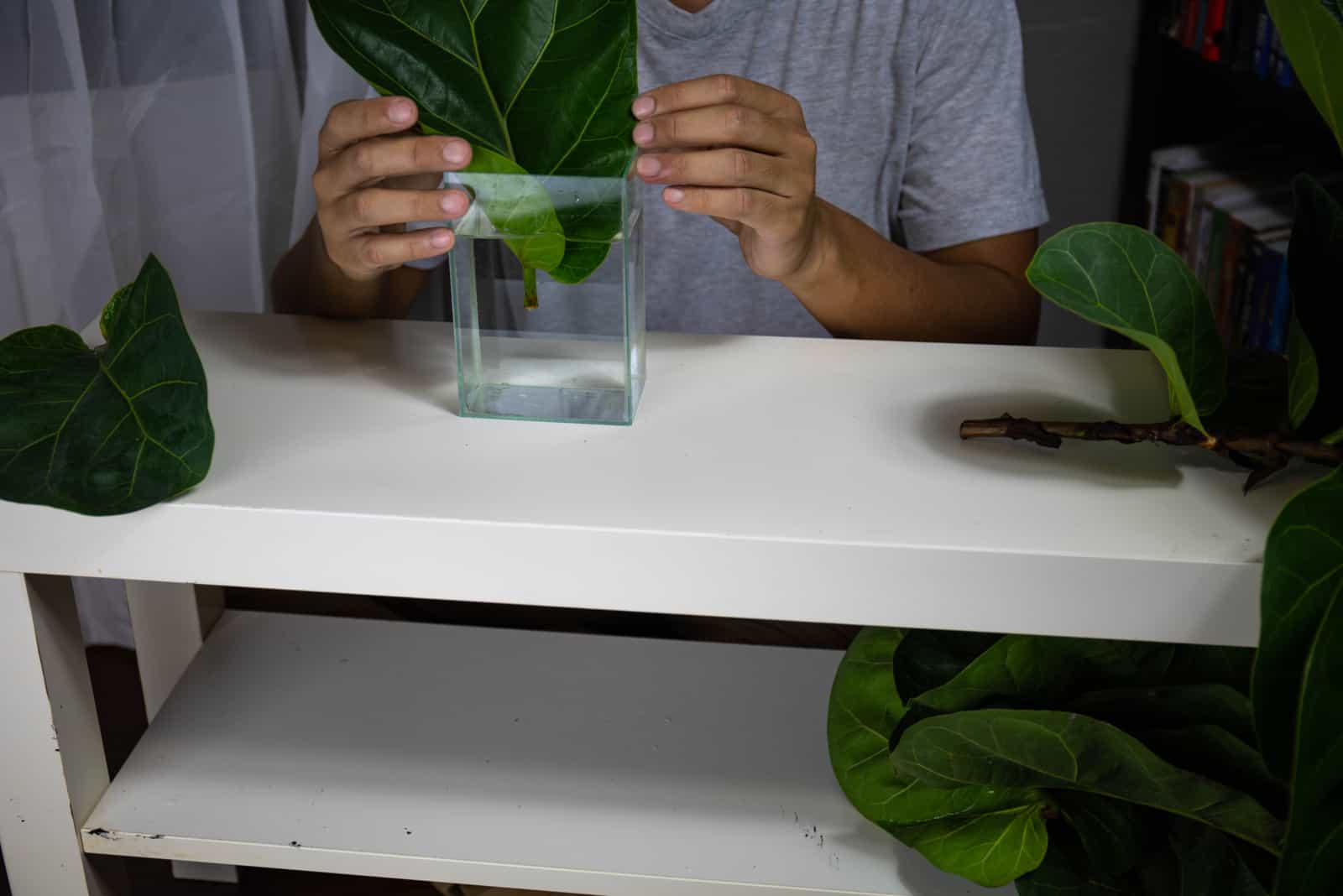Positive Bloom is an Amazon Associate and we earn from qualifying purchases through these links at no extra cost to you.
It’s pretty hard to find a garden without fig trees, and the reason is simple; they are low-maintenance and thrive in various conditions.
You can grow them as fruit-bearing or ornamental plants, and whichever you choose, you won’t regret it!
Luckily, this type of plant is easily propagated and it doesn’t take much time. You can get a new fig tree to expand your collection or give as a gift relatively simply.
Many beginner growers wonder if it’s possible to start fig tree cuttings in water, and the answer is a resounding yes. It’s actually the easiest way to propagate this type of tree.
This propagation method has many benefits, so read on to find out everything.
I will show you how to propagate and also give the answers to many questions related to fiddle leaf fig propagation.
Let’s get started!
How Do You Start Fig Tree Cuttings In Water?
One of the biggest Fiddle leaf fig benefits is that it’s easily propagated. However, we need to take a few things into consideration when it comes to water propagation.
The first is when to propagate the plant. The second is how to take the cuttings, because propagation won’t be successful if you don’t take cuttings properly.
Additionally, the amount of water you will need for the cuttings is also important.
I know this may sound a little complicated, but I assure you this method is easy and has a high success rate.
Just follow our advice, and there is no need to worry!
When Is Best To Take & Root Fiddle Leaf Fig Cuttings?
The fiddle leaf fig enters dormancy at the beginning of the winter. This is the best time to prune the plant and take and root the cuttings.
However, propagation will be successful even if you take the cuttings in summer, but you will need to pay attention to a couple of things.
First, you should remove the leaves and any baby unripe figs, also known as figlets. However, don’t remove the tiny ones that are about to grow.
This is a great time to inspect the plant and look for any pests. If you find any, you should remove them.
How To Take Fig Tree Cuttings
Now comes the vital part of the entire process, taking the cuttings. It’s really simple so you shouldn’t have any trouble.
Let’s look at the entire procedure as well as a few tips and tricks.
• Prepare heavy-duty pruners or scissors. Sterilize the tools with rubbing alcohol or soak the tools in a mixture of water and bleach (9:1).
Although you can wash the tools with soapy water, it won’t guarantee that your fig won’t get an infection. The safest way is to sterilize the tools to avoid contamination of the cuttings or mother plant.
• Choose a branch that has at least two nodes (even better if there are more). The nodes are joints in branches from which new roots and new shoots emerge.
Alternatively, select some longer branches and cut them off into 4-7 inch sections.
Each cutting should have three or more nodes.
You should also pay attention to the position of the nodes. For example, the lower part of the branch should have one or two nodes. This is essential because it’s from these nodes that we actually see new root growth.
One or two nodes should be lower down on the branch as the roots will grow from there. One or more nodes should be at the top of the branch because new leaves will grow from there.
Here is a video explaining everything:
If you purchase cuttings from the plant store, wrap them with a paper towel and place them in the fridge.
More Tips For Improving The Success Rate
• The cutting shouldn’t be placed upside down, so cut the bottom of the fig cutting at an angle with the top flat. This way you’ll know how to place the cutting.
• You can also immerse the cuttings in warm and soapy water. Although this step is optional, I suggest you do it as it can help with removing any pests on the branches.
You can also dip the cutting in a mixture of bleach and water and hold it for about 20 seconds. If there is any fungus, this solution will definitely help.
If your cuttings are already rotting before rooting, you can use the method described above.
I also suggest placing a few cuttings together in the water, which will increase the success rate of the propagation.
How Much Water Should You Use To Root Fig Tree Cuttings?
The amount of water you need for propagation depends on the number of cuttings. If there are two nodes, prepare the amount of water you need to cover one node.
If you have, for example, three nodes, cover two of them with water and make sure one node is above the water. This way, one of the nodes will always be wet, thus improving the success rate.
Be careful because water can become contaminated and some of the cuttings may rot. Always change the water every couple of days.
How Long Does It Take For A Fig Cutting To Root?
You can expect the roots of the new fiddle leaf fig to sprout in 3-4 weeks.
However, water propagation increases the chances of the cuttings rotting so you’ll need to inspect them regularly or this method won’t work.
On the other hand, it can take more than four weeks for the roots to sprout. If everything is fine after you inspect the cuttings, just give them some time.
How To Plant Rooted Fig Cuttings
There should be more roots on a single cutting before you transplant them, and the roots should be healthy and long enough for successful planting.
If the roots are too small or there are no more than two roots on the cutting, I suggest you wait a little longer.
Remember that the roots are delicate, so even the slight pressure may cause damage.
Here is how to plant the cuttings:
• Fill up the bottom of the pot with soil.
• Put the bottom of the cutting in the center of the soil then hold the cutting up with one hand and pour potting mix or soil around it. You will know you are done when all the roots are covered with soil.
• Water the cuttings to avoid transplant shock.
Propagation In Water vs. Soil
Many growers plant fig cuttings directly in the soil, which helps the roots to sprout and grow naturally. In this way, we avoid waterlogged roots.
However, placing the cuttings in water also has many benefits.
When planted in the soil, the top of the cuttings may dry out as they don’t receive enough water. On the other hand, cuttings are constantly moist in water.
If you change the water regularly, you decrease the chances of contamination or root rot.
This method is perfect if you are a more visual type because when the cutting starts producing roots, you can watch the entire process. You can see how many roots have sprouted and also if there are any damaged roots.
This way, you can act as soon as you spot something wrong with the cuttings or their new roots.
The water propagation method helps you avoid root rot. Before you plant the cuttings in the soil, the roots will be well-grown, healthy, and less sensitive.
In the case of Fiddle Leaf Fig, rooting the cuttings in water has a high success rate, unlike for some other trees like citrus.
Other Fiddle Leaf Fig Propagation Methods
There are three basic methods used for propagating Fiddle Leaf Fig, including water propagation, soil propagation, and air layering.
We have already seen how to root the cuttings in water.
In the case of the soil method, you first take the cuttings, dip them in a rooting hormone to promote root growth, and then plant them directly in the soil.
Now, let’s look at the third method, air layering.
Air Layering
The air layering method involves growing the roots with a branch or stem that is still attached to the mother plant.
This method is ideal if you have larger branches.
Before you start, you should prepare the following:
• The mother plant (adult Fiddle Leaf Fig)
• Sphagnum moss
• A plastic bag or bottle
• Tape
• Sharp knife or a pair of scissors
Now, follow these 7 steps:
1. Wet the sphagnum moss and squeeze it to remove excess water.
2. If you are using a plastic bottle, make a cut in the middle so that you can open it.
3. Select a healthy section of the stem that has nodes and remove the leaves.
4. Cut into the bark horizontally in two places using a sharp knife or a pair of scissors (sterilize before use).
5. Remove a section of bark on the fiddle leaf fig plant. If you notice any sap coming out, don’t worry because it’s completely normal. Always use sharp tools to avoid cutting the entire branch.
6. Wrap the section with sphagnum moss.
7. If you are using a plastic bottle, place it around the sphagnum moss and tape it up. If you are using a plastic bag, cover the sphagnum moss and make some holes in the bag.
Unwrap the section after approximately 6 weeks, at which point you should see new growth. Cut off the section with roots and plant it in the soil.
How To Care For A Fig Tree After Transplanting
Remember that you now have a small and fragile new plant, so you need to take good care of it if you want it to mature.
The Ficus lyrata, or Fiddle Leaf Fig, is an indoor plant that will reward you if you provide it with the right conditions.
It may be challenging to take care of in the beginning, but once you learn the basics you won’t have any issues.
Let’s go!
Light & Temperature
The Fiddle Leaf Fig appreciates a little morning or late afternoon sun, so you should never expose this plant to direct sunlight. Choose bright indirect light instead.
On the other hand, keeping the plant in low light for an extended period may result in stunted growth. This is especially important for a new tree as it needs more light to grow healthy.
If you are unsure whether either the cuttings you’re using for plant propagation or the mature plant are receiving enough light, consider purchasing grow lights.
This houseplant grows well at room temperatures, but despises temperature fluctuations, so keep your Fiddle Leaf Fig away from devices like air conditioners and vents.
Humidity & Soil
The Fiddle Leaf Fig grows well at moderate humidity, and anything higher than 30% and lower than 65% should work well.
If you need to increase humidity levels you can use a humidifier. Alternatively, you can use a humidity tray or create a microclimate by grouping your plants.
Well-draining soil rich in organic matter is ideal for the Fiddle Leaf Fig plant. For example, a combination of peat-based soil (2/3) and perlite (1/3) will do wonders. You can also use loam-based compost.
It will help the roots receive enough water and nutrients and establish a strong root system.
Watering & Fertilizing
Watering is one of the most important parts of fig plant care as it can cause many issues if done incorrectly.
It took me a while to create the perfect watering schedule for my fig.
When a Fiddle Leaf Fig doesn’t receive enough water it will most likely wilt and lose its beautiful green color.
On the other hand, if the Fiddle Leaf Fig receives too much water, it’s way more dangerous than underwatering. If your fig has overwatered potting soil, it is most likely going to end up suffering from root rot.
Overwatering can kill your fig plant, so you need to find the right balance.
The best time to water this plant during the growing season (summer and fall) is when the upper part of the soil is dry (2-3 inches).
Another issue for this plant is salt build up. If you want to avoid this, flush your Fiddle Leaf Fig at least once a month by watering it until you see water coming out of the pot’s bottom.
Fertilizing
During the growing season, you can fertilize your fig plant with a fertilizer rich in Nitrogen.
You can also purchase fertilizer made specifically for the Fiddle Leaf Fig plant. I suggest this fertilizer from Amazon:
Repotting
The Fiddle Leaf Fig plant needs repotting every year. I usually repot my fig in spring.
Look for a larger pot, about 2 inches larger than the previous one. A large pot needs more soil, which means more soil will be around the roots. This increases the chances of overwatering.
The first thing you should do is loosen the plant, then gently lift it (make sure to support its base). Put the plant in the new container and add more soil.
Unfortunately, you cannot lift a mature fig plant. You can remove the top few inches of topsoil and replace it with fresh potting mix.
How To Care For The Fiddle Leaf Fig During Winter
If you want to propagate fig trees, I suggest you do so in winter.
During its dormant season, the Fiddle Leaf Fig plant needs slightly different conditions.
Here are the things to pay attention to:
• As the winter approaches, most of us use heating vents without realizing how they will affect our plants. Never place your fig plant near these devices as they may damage the plant.
• The Fiddle Leaf Fig doesn’t actively grow during winter, so it won’t need much water.
• Never fertilize your fig during the dormant season as it can cause burns.
Wrapping Up
The Fiddle Leaf Fig is undoubtedly one of the most beautiful plants you can grow for both horticultural and landscaping purposes.
It’s no wonder we are looking for different rooting methods, because we want to get new plants as soon as possible!
A pair of scissors, a fig cutting, and a jar of water is all you need to get a new and captivating Fiddle Leaf Fig plant.
Propagate your fig tree cuttings in water, and enjoy the view. Good luck!
Until next time.
Like this post? Share or pin it for later!


